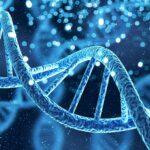
The Genetic Culprit: Exploring Androgenetic Alopecia’s Role in Hair Loss
February 26, 2024
Spotlight on Alopecia Areata: Exploring its Causes and Impact on Hair Health
March 18, 2024When it comes to hair loss, what we can see is often just the tip of the iceberg. Underneath the surface, a complex interplay of genes and hormones is at work. While environmental factors, such as stress and diet, can influence hair health, genetics fundamentally shape an individual’s susceptibility to hair loss.
Genetic Predisposition
Genetic factors significantly determine an individual’s susceptibility to hair loss. If your parents or grandparents experienced hair loss, you might be more likely to do the same. This is due to the inheritance of certain genes that influence hair growth and follicle health. But it’s not a simple one-to-one inheritance; hair loss is a polygenic trait, meaning multiple genes contribute to it.
Hormonal Influence
Genetics also play a role in how our bodies react to hormones, particularly dihydrotestosterone (DHT). In genetically predisposed individuals, high levels of DHT can lead to hair follicle miniaturization, a process where the follicle shrinks over time, leading to thinner hair and eventually, hair loss.
Genetic Variants and Risk Factors
Certain genetic variants, such as those linked to androgenetic alopecia (male and female pattern baldness), are associated with an increased risk of hair loss. Variations in genes like AR, SRD5A2, and BMP4 can affect how our bodies process hormones and interact with hair follicles, increasing the likelihood of hair thinning and balding.
Polygenic Inheritance
Hair loss is a classic example of polygenic inheritance, where multiple genes contribute to a trait. The interplay between these various genetic factors, along with environmental influences, impacts the severity and progression of hair loss. It’s not just about carrying the ‘baldness gene’; it’s about how your unique genetic makeup interacts with your environment.
Genetic Testing and Predictive Analysis
Thanks to advancements in genetic testing, we can now assess an individual’s risk of hair loss more accurately. Genetic analysis can predict your likelihood of developing hair loss, providing valuable insights that can inform personalised treatment strategies and preventive measures.
In conclusion, while we often focus on what’s visible – the thinning hair, the receding hairline – it’s essential to recognise that the roots of hair loss go much deeper. Understanding the genetic factors that contribute to hair loss can provide valuable insights for prevention and treatment, moving us beyond the surface towards a more comprehensive approach to hair health.




